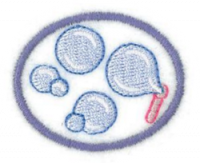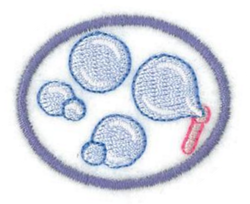Difference between revisions of "AY Honors/Bubbles/Answer Key/es"
From Pathfinder Wiki
(Created page with "</noinclude>") |
(Created page with "</noinclude> <!-- 5. Tensión superficial --> <noinclude>") |
||
| Line 59: | Line 59: | ||
{{CloseReq}} <!-- 2 --> | {{CloseReq}} <!-- 2 --> | ||
{{ansreq|page={{#titleparts:{{PAGENAME}}|2|1}}|num=3}} | {{ansreq|page={{#titleparts:{{PAGENAME}}|2|1}}|num=3}} | ||
| − | <noinclude> | + | <noinclude></noinclude> |
| − | </noinclude> | + | <!-- 3. Hacer un modelo o dibujo de una molécula de jabón. Mostrar por qué la molécula es hidrófilo o hidrófobo. --> |
| − | <!-- 3. | ||
| − | |||
| − | |||
| − | |||
| − | |||
{{clear}} | {{clear}} | ||
| − | + | <noinclude></noinclude> | |
| − | <noinclude | ||
| − | |||
{{CloseReq}} <!-- 3 --> | {{CloseReq}} <!-- 3 --> | ||
{{ansreq|page={{#titleparts:{{PAGENAME}}|2|1}}|num=4}} | {{ansreq|page={{#titleparts:{{PAGENAME}}|2|1}}|num=4}} | ||
| − | <noinclude> | + | <noinclude></noinclude> |
| − | </noinclude> | + | <!-- 4. Hacer una lista de las normas de seguridad acerca de soplar burbujas. --> |
| − | <!-- 4. | ||
| − | |||
| − | |||
| − | |||
| − | |||
| − | |||
| − | |||
<noinclude></noinclude> | <noinclude></noinclude> | ||
{{CloseReq}} <!-- 4 --> | {{CloseReq}} <!-- 4 --> | ||
{{ansreq|page={{#titleparts:{{PAGENAME}}|2|1}}|num=5}} | {{ansreq|page={{#titleparts:{{PAGENAME}}|2|1}}|num=5}} | ||
| − | <noinclude> | + | <noinclude></noinclude> |
| − | </noinclude> | + | <!-- 5. Tensión superficial --> |
| − | <!-- 5. | + | <noinclude></noinclude> |
| − | <noinclude | ||
| − | |||
{{ansreq|page={{#titleparts:{{PAGENAME}}|2|1}}|num=5a}} | {{ansreq|page={{#titleparts:{{PAGENAME}}|2|1}}|num=5a}} | ||
<noinclude></noinclude> | <noinclude></noinclude> | ||
| Line 229: | Line 213: | ||
{{CloseReq}} <!-- 8b --> | {{CloseReq}} <!-- 8b --> | ||
{{ansreq|page={{#titleparts:{{PAGENAME}}|2|1}}|num=8c}} <!--T:50--> | {{ansreq|page={{#titleparts:{{PAGENAME}}|2|1}}|num=8c}} <!--T:50--> | ||
| − | <noinclude> | + | <noinclude></noinclude> |
| − | </noinclude | ||
| − | |||
| − | |||
| − | + | {{clear}} | |
| − | |||
| − | |||
| − | |||
| − | + | {{clear}} | |
| − | |||
| − | |||
| − | + | {{clear}} | |
| − | |||
| − | |||
| − | + | {{clear}} | |
| − | |||
| − | |||
| − | + | <noinclude></noinclude> | |
| − | <noinclude | ||
| − | |||
{{CloseReq}} <!-- 8c --> | {{CloseReq}} <!-- 8c --> | ||
{{CloseReq}} <!-- 8 --> | {{CloseReq}} <!-- 8 --> | ||
| − | <noinclude> | + | <noinclude></noinclude> |
| − | </noinclude> | + | ==Referencias== |
| − | == | + | [[Category:Adventist Youth Honors Answer Book/es]] |
| − | + | <noinclude></noinclude> | |
| − | [[Category:Adventist Youth Honors Answer Book/ | ||
| − | <noinclude | ||
| − | |||
{{CloseHonorPage}} | {{CloseHonorPage}} | ||
Revision as of 08:30, 5 April 2021
Burbujas
Nivel de destreza
2
Año
2015
Version
13.12.2025
Autoridad de aprobación
División Norteamericana
1
Definir los siguientes términos:
1a
Burbuja de jabón
1b
Hidrofílico
1c
Hidrofóbico
1d
Tensión superficial
1e
Energía mínima
1f
Superficie mínima
2
¿Cómo los siguientes factores climáticos afectan la vida de una burbuja y cómo?
2a
Humedad
2b
Temperatura
2c
Viento
2d
Precipitación
3
Hacer un modelo o dibujo de una molécula de jabón. Mostrar por qué la molécula es hidrófilo o hidrófobo.
4
Hacer una lista de las normas de seguridad acerca de soplar burbujas.
5
Tensión superficial
5a
Explicar qué causa la tensión superficial.
5b
Hacer un experimento para determinar si el agua jabonosa tiene tensión superficial alta o baja.
- Procedure
6
Sopladores
6a
Explicar qué tipos de materiales sirven mejor para el diámetro de sopladores grandes para burbujas.
6b
Construir un soplador para hacer burbujas grandes.
7
Componentes
7a
¿Qué calidad de agua sirve mejor para las burbujas? ¿Cuáles impurezas afectan negativamente a la calidad de la burbuja?
7b
¿Cuáles jabones son mejores para una solución de burbujas?
7c
¿Cuál es el propósito de la glicerina o el jarabe de maíz en una solución?
7d
Aprender una fórmula para una solución para burbujas y hacer una mezcla de esa solución.
Glycerin This is the secret ingredient that gives a bubble its extra strength.
7e
Evaluar su solución para burbujas y hacer una receta mejor, si es necesario.
8
Experimentos
8a
Mostrar lo que pasa cuando una burbuja se encuentra con otra burbuja. ¿Cómo esto ilustra la energía mínima y la superficie mínima?
8b
¿Qué causa los colores en una burbuja? Demostrar interferencia constructiva y destructiva.
8c
¿Qué forma tienen las burbujas y por qué? Hacer un experimento para ilustrar la respuesta.


